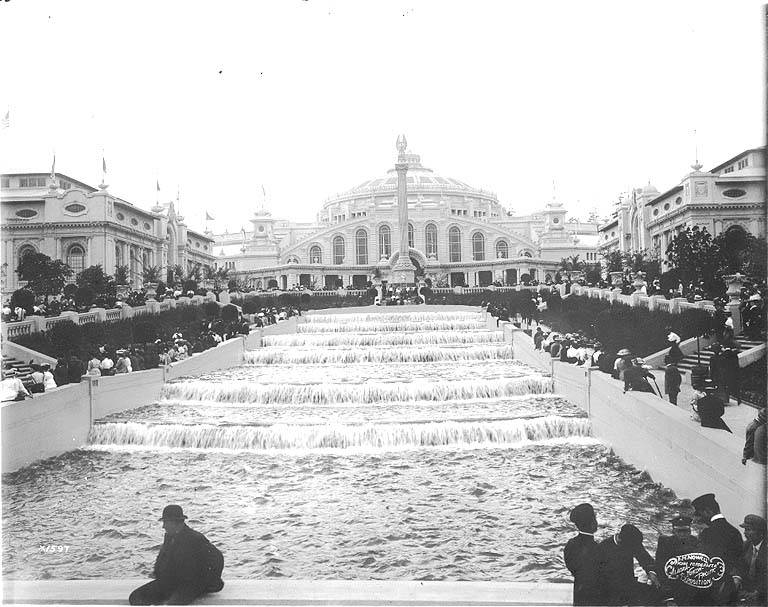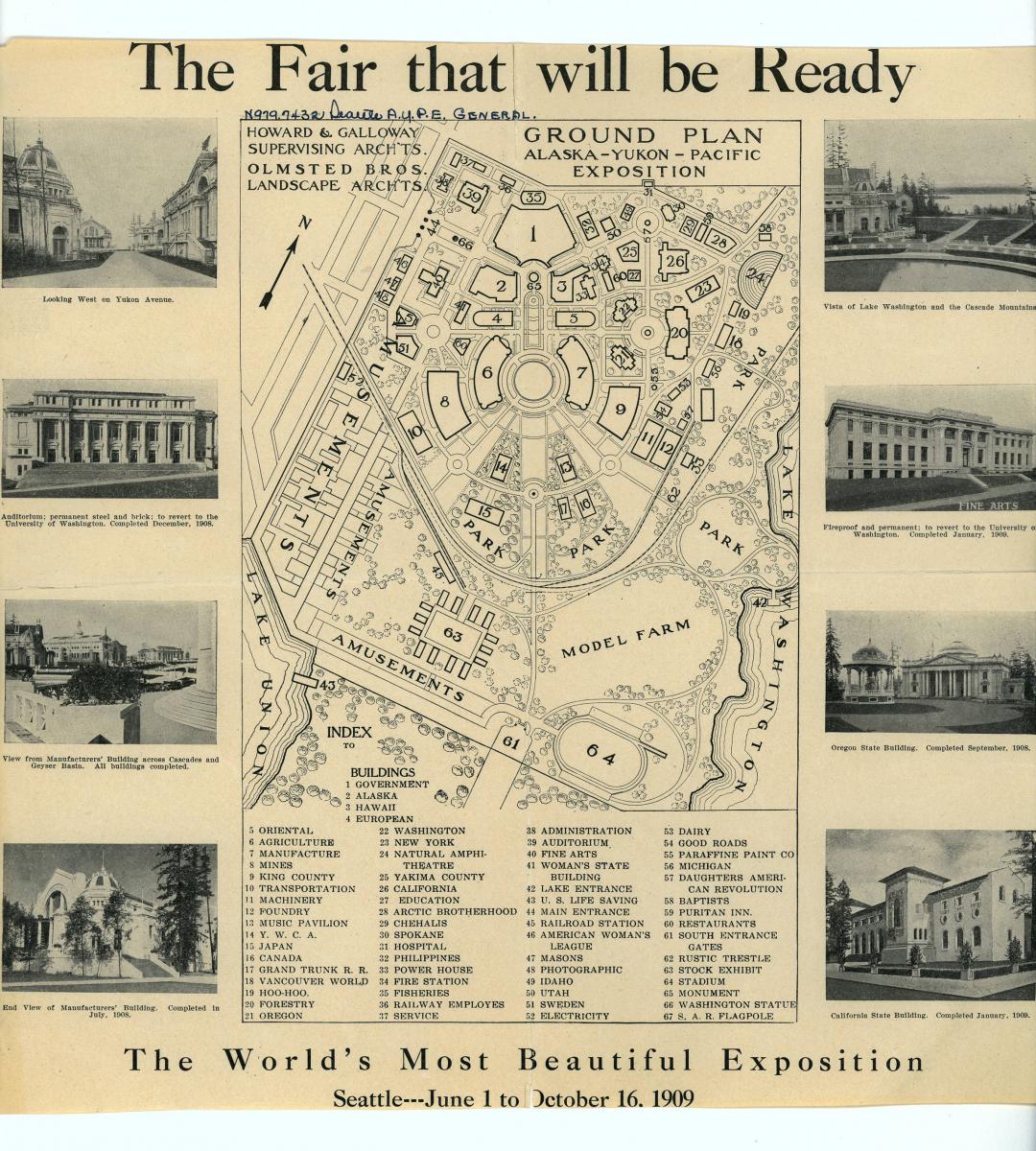
The UW's ENVIR 480: Sustainability Studio class in the Program on the Environment presents students with a sustainability topic which they engage in as part of an experiential learning course. The topics change each quarter - this spring, the students researched the UW's environmental history. This is part of a series of posts by the students on some of the information they uncovered.
Almost 100 years ago, the Olmsted Brothers landscape architecture firm was contracted by the University of Washington to design the grounds for the 1909 world’s fair, formally known as the Alaska-Pacific-Yukon Exposition, and their work continues to share the campus today.
The exposition took place during the summer of 1909 and drew crowds from around the world to the fair held on the current UW campus. It took the firm several months to complete plans for this world fair, but the University of Washington’s Board of Regents approved them on May 17th, 1907.
 John Olmsted was the primary designer of the plans and unlike previous world’s fairs, he modeled the plans after getting inspiration from the environment. This includes Mt. Rainier, Lake Washington, and Lake Union, which were all turned into vistas and make up the axis of the current campus. His plans also allowed “for a significant amount of existing forest and undergrowth to remain” while staying below the $380,000 budget. Olmsted’s designs framed the environment, incorporating many native plants and enhancing the natural beauty of the local landscape.
John Olmsted was the primary designer of the plans and unlike previous world’s fairs, he modeled the plans after getting inspiration from the environment. This includes Mt. Rainier, Lake Washington, and Lake Union, which were all turned into vistas and make up the axis of the current campus. His plans also allowed “for a significant amount of existing forest and undergrowth to remain” while staying below the $380,000 budget. Olmsted’s designs framed the environment, incorporating many native plants and enhancing the natural beauty of the local landscape.
Despite the positive influences on the landscape, the Olmsted Brothers’ plans also negatively impacted the environment. About 200 acres of untouched land was cleared of trees and brush and developed for the exposition. Many of the slopes in the area were also leveled using dynamite and teams of horses. The designs only planned for four of the exposition buildings to remain after the event, meaning that the rest of the structures were demolished and construction materials wasted. However, the initial development of the land for the exposition facilitated the construction of all structures afterwards, including the ones on campus today.
The Olmsted Brothers remain an influential part of UW history. They influenced the design of the campus in many ways, including the creation of Rainier Vista and Drumheller Fountain. For a number of years, the university used some of buildings constructed for the fair, although today,only Architecture Hall and Cunningham Hall remain.
Other projects that the Olmsted Brothers designed, influenced, or recommended in Washington state include the Washington Park Arboretum, Alki Beach Park, Madrona Park, Volunteer Park, Woodland Park, Gas Works Park, and Green Lake Park.
By Dorothy Kong
For more information on the environmental history of UW, see our interactive timeline "A Century of Sustainability" at sustainability.uw.edu/timeline.